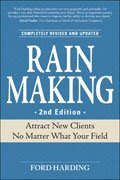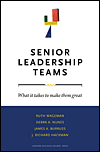Regular readers may be tiring of the constant barrage of story-related posts, or at minimum be trying to figure out how they relate to the title of this blog. Here are some words that I hope tie it together.
More and more products are launched and evolve in an iterative fashion. Version 1 does this, version 2 does that, and version 3 finally hits the mark and becomes the standard (exhibit A: Windows). Those iteration windows are becoming tighter, so good information as a basis of planning product changes is invaluable. Google in particular has turned this approach into an art form.
There are more and more ways to get feedback directly from users. Forums, call centers, social networks, Twitter, etc., etc., allow users to communicate their likes and dislikes about a product.
Now, to storytelling. Most business applications of storytelling focus on communicating outward--developing a story that helps communicate the essence or benefits of your product or company. Steve Denning, in his recent book "The Secret Language of Leadership" calls these indirect stories--stories that inspire stories in the mind of the reader or listener. Indirect stories are necessarily incomplete--they are not meant to immerse the listener in an experience (like, say, Harry Potter does). They are meant to create empathy and consensus.
What I'm talking about (as are Shawn Callahan & Mark Schenck of Anecdote, Dave Snowden of Cognitive Edge and others) is inverting that model.
In addition to crafting stories and sending them out toward customers, staff, etc., what if we listen to the indirect stories coming from them? They are also necessarily incomplete--mere anecdotes--but if you gather a few dozen, a few hundred, or a few thousand, common themes and threads will become evident. To invert Denning's language, there's the possibility of inspiring stories in the mind of the company.
These stories might say things like:
- People find our product really hard to use.
- Feature X of our product is proving more valuable than we expected.
- A group of people are using our product in an interesting way that we didn't anticipate.
As a product manager, the above stories are very important to me. They help orient me toward things I should do to improve product packaging, add or delete features, alter its marketing message or improve its customer service or technical support. Also, the user stories are pre-hypothesis, meaning that they are free of bias that can come via hypothesis-based approaches such as surveys. They are not adulterated by groupthink, as can happen with focus groups. They are the voice of the customer.
None of the individual anecdotes may send clear messages about where innovation is working and where it isn't. But the accrual of them can do so.
Companies don't use this resource to improve innovation. They should.
And that's what I'm talking about.
(For a powerful example of the accrual of "indirect" stories to create a compelling, nuanced, overall story, please refer to
this earlier post on Haruki Murakami's "
Underground.")
Related Post:
Stories that people tell about products are invaluableTags:
complexity,
narrative,
product management,
sensemaking,
innovation,
what in hell is,
storytelling





















